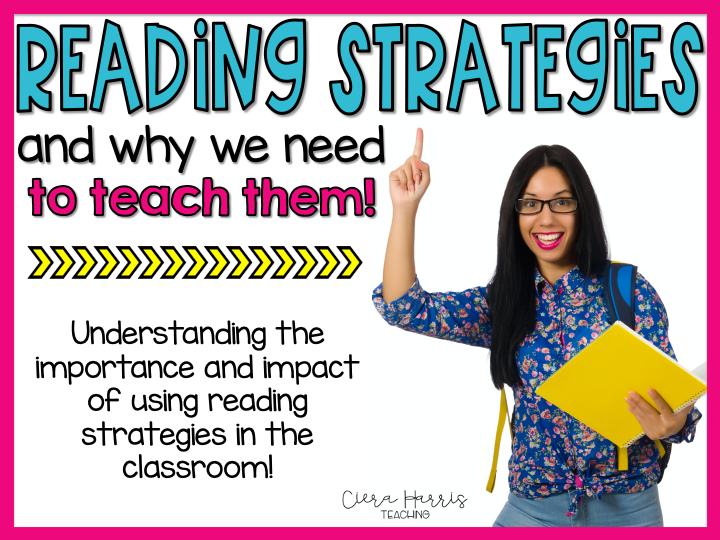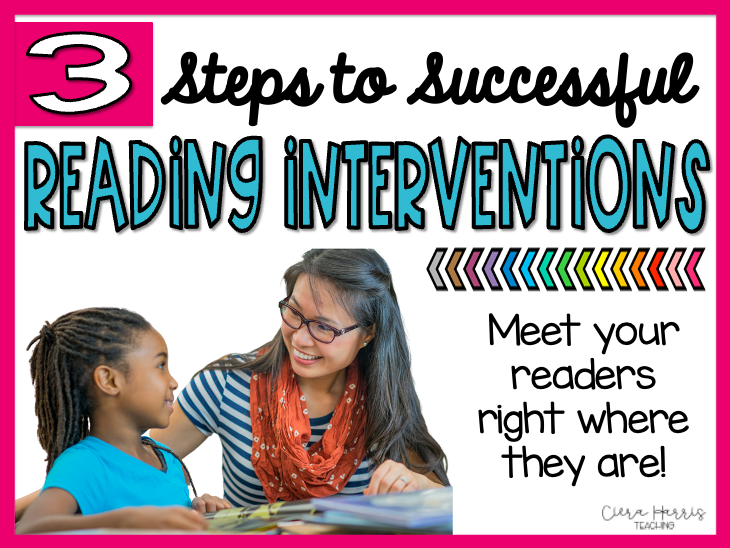There is no doubt that reading teachers everywhere have their work cut out for them. With readers coming into the classroom all at different levels and reading teachers having a file full of skills and strategies to teach, it’s hard to get it all in. So how do we figure out what to teach and focus on? Should we be teaching more reading skills or strategies? Does one make an impact over the other? I’ve got 6 specific reasons why all teachers should be teaching strategies.

Want to watch the video instead? Check it out below! Make sure to subscribe to get updates on all new content!
First off, I want to make sure we’re all on the same page. I know there are multiple definitions of what ‘reading strategies’ are. In more recent publications, such as Jennifer Serravallo’s books, reading strategies are discussed as the action steps that readers take to comprehend. Reading strategies are how the reader approaches understanding of specific areas of the text. She speaks of how there are many strategies for any skill imaginable. Although I do agree that the ‘approach a student takes to understanding a text’ can be considered a strategy, the TRUE strategies are unique and crucial to a students’ reading success.
There is an ACTUAL and fundamental difference between reading skills and strategies. Understanding the difference between them is step one. If you’re unsure of the difference, make sure to head over and read all about how reading skills and strategies are different! Once teachers understand the difference, they will begin to see how important these strategies are to students’ success. But just in case we need a bit more persuading, I’ve got a few other reasons I’d like to share!
Strategies Show the Reading Process
Reading is a very ‘closed’ process. When we read, it’s typically in our minds and without dialogue to comprehend. The dialogue takes place inside our minds. We read, decode, think, question, analyze, all without others hearing or listening. Why is this important to understand? When we are teaching early readers (or even established readers), it’s important for all of them to SEE and HEAR from us exactly what’s happening in our minds. They need to SEE and HEAR the reading process for themselves. This is why it’s so important to model out loud when reading. So where do strategies come into play here?
Strategies help readers to see the process of reading. Strategies such as visualization, making connections, asking questions, and metacognition help to SHOW the reader that’s it’s not all about reading the words, but about THINKING about the text itself. So when teachers merge modeling out loud with the strategies, their students are actually getting a glimpse into the true reading process.
Strategies Help Make Connections to Other Skills
Reading strategies are fantastic. They teach the reader how to think! But what’s even better is once students understand how to use these strategies, they can use them to connect other reading skills! For example, students can see the connection between visualizing and identifying the setting. They can see how determining importance and main idea go hand in hand. Students can begin to USE the strategies to help increase their understanding and application of reading skills. Instead of teaching each skill and strategy in isolation, we can use their understanding of the strategies to support their understanding of the other skills. It’s a win-win!
In my Building Comprehension online course for teachers, we focus heavily on both reading skills and reading strategies. All participants receive my Reading Strategy Guidebook as one of their amazing BONUS freebies in the course. It’s over 90 pages and includes lessons, materials, and everything you need to be successful in teaching reading strategies. You can join the waitlist for the course by entering your information below!

Strategies Show Active Reading
One of the biggest complaints teachers have when it comes to comprehension is that their students read but don’t recall information. This is due to the students’ lack of thinking while reading, don’t you agree? We need to get our students to become ACTIVE readers. What does an active reader do? They THINK. They analyze. They ask questions, visualize, determine importance, monitor their understand (metacognition). They use STRATEGIES. So when we have students who are struggling with reading comprehension, my go-to recommendation is always reading strategies. We need to teach them to become ACTIVE readers.
Strategies Include the Reader
One of the most important things a reader brings to a text is himself/herself. A reader’s experience of a text changes from reader to reader based on the reader’s life experience. What I take away from a story might be completely different from what you take away. So how are strategies connected to this? Strategies allow (and even force) the reader to use THEMSELVES when reading. Strategies force students to rely upon their lives, their schema, their life experiences, and background knowledge in order to understand the story. Strategies show the reader that their own experience, opinions, and thoughts MATTER when it comes to comprehending the text. When readers feel validated and can see that they have information in their minds already that can help them comprehend, it increases their confidence and overall ability to comprehend. Strategies are powerful!
Provides the Give and Take
Reading isn’t a one-sided conversation. It’s not just about what the author wrote. It’s about what the reader takes away from it. Reading is a give and take relationship between the author and the reader. So how can we teach this to students? Teach them to use strategies! Strategies SHOW the ‘give’ part of the give and take. I’m taking what the author has given me in the text and I’m giving back based on what I visualize, determine to be important, connections I make, etc. By teaching strategies, we’re showing our students that both voices are important, theirs, and the authors.
Strategies are During, Reading Skills are After
We want our students to be thinking WHILE reading, yes? While reading, they aren’t thinking about ‘main idea and details’ or ’cause and effect’. Reading skills are aftermath thinking. They happen after a text has been read. Strategies happen WHILE reading. As I read, I’m visualizing, making connections, etc. When we teach students that these strategies happen during and not after, we are teaching them the importance of thinking while reading.
So what do you think? Is there a place in our reading instruction for strategies? Do they have merit to our students’ success in reading? Will you be making more time for them in your reading instruction? I’d love to know! Save this post for later by pinning the image below!






